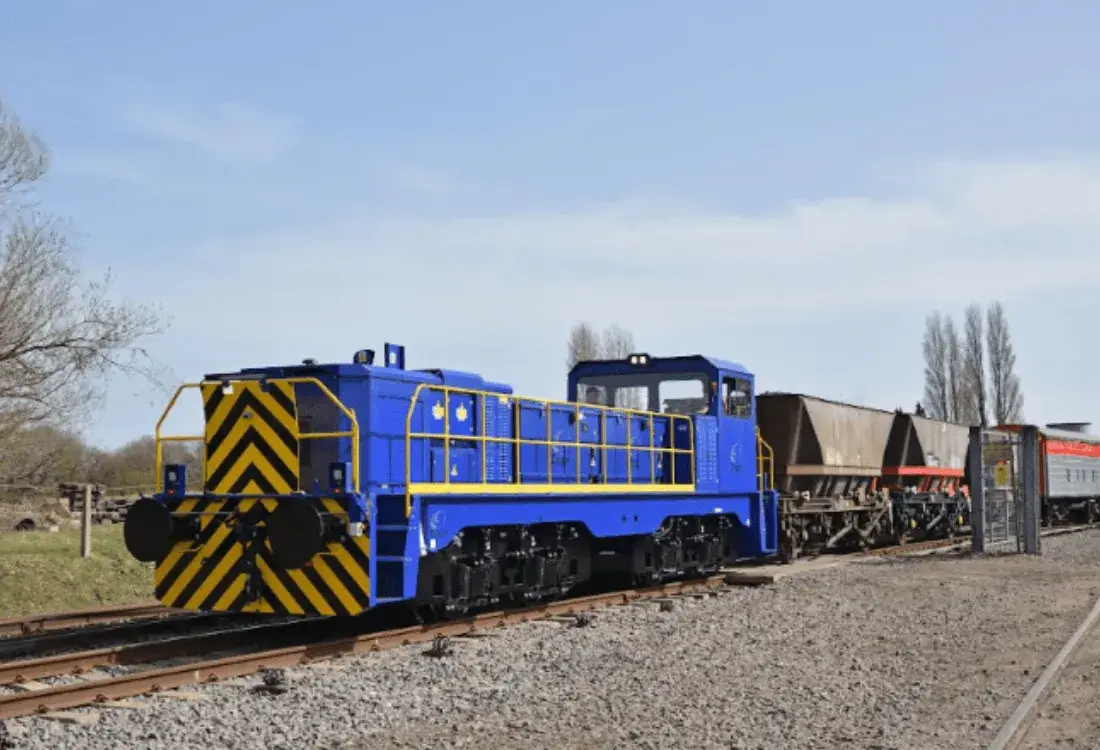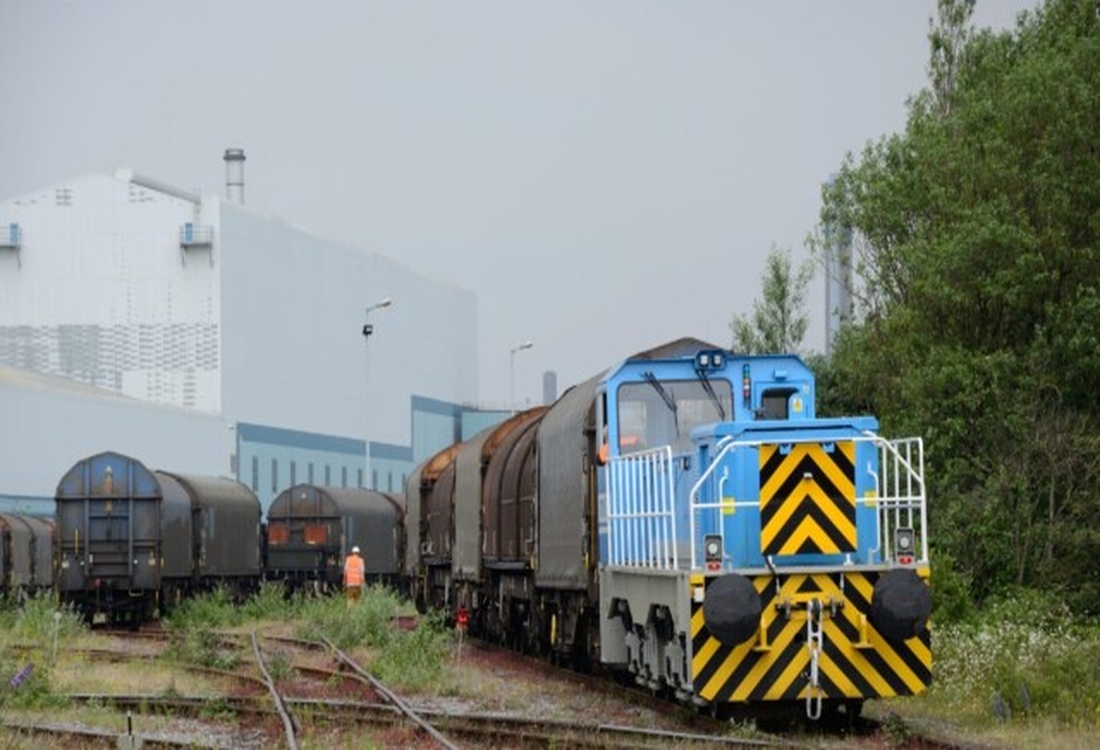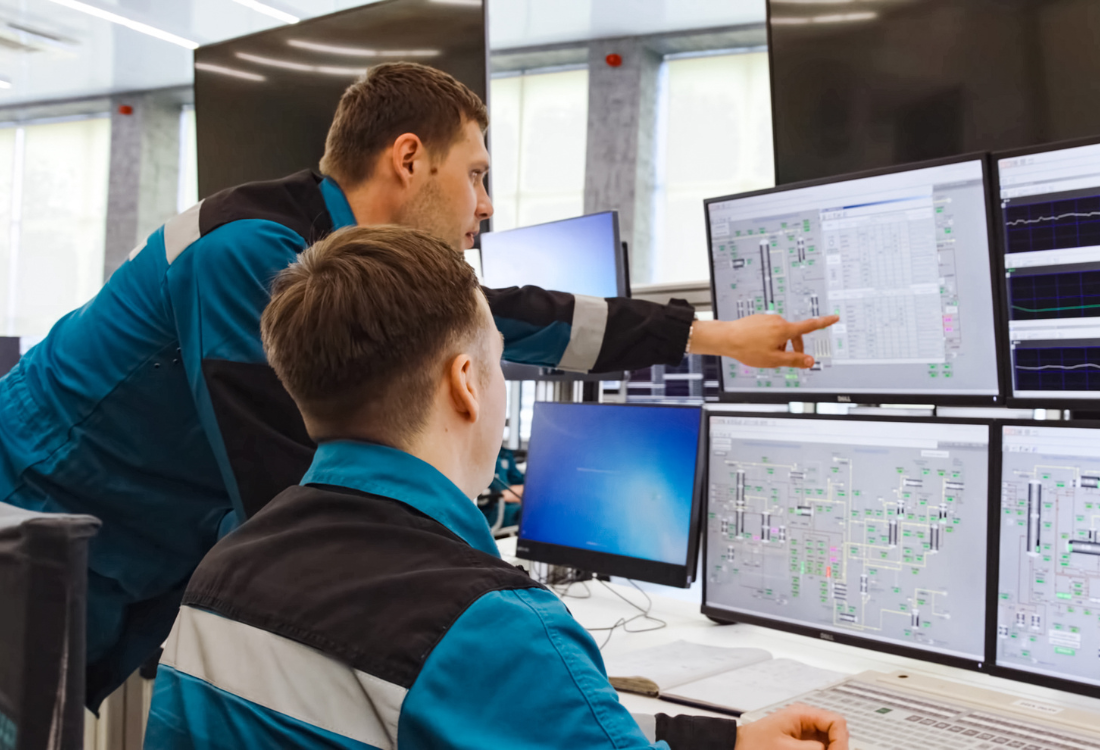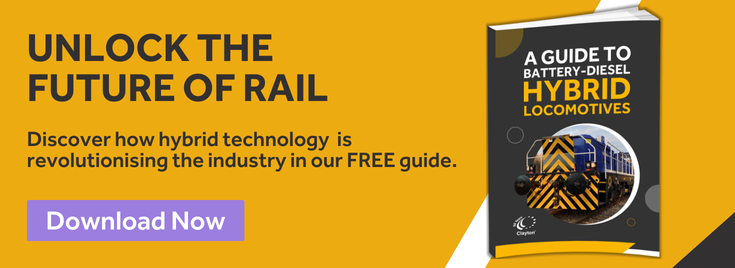Electric Vs Diesel Locomotives: Which Is Better For Mining Operations?
By Jessica Salt on August 26, 2024
Electric Vs Diesel Locomotive: The Pros & Cons
Diesel Locomotives: A Versatile Workhorse
Electric Locomotives: A Clean and Efficient Alternative
Battery-Powered Locomotives
-
Battery-Powered Locomotives require minimal infrastructure (only battery chargers and possibly spare batteries)
-
Lower upfront infrastructure costs
-
More flexible deployment options
-
Limited by battery range
-
Suitable for shorter routes or operations with regular charging opportunities
Overhead Line Locomotives
-
Unlimited operational range while connected to power lines
-
Consistent power supply
-
Higher infrastructure costs due to overhead line installation
-
Less flexible as they're restricted to routes with overhead lines
-
Ideal for established, long-term mining operations
How To Make Your Choice
The Hybrid Approach
What Next?
Whatever your mining locomotive needs, Clayton Equipment can help assess your requirements and recommend the right solution. Speak to one of our experts today to learn more about our range of diesel, electric, and hybrid options that are designed to meet the demands of the modern mining industry.
- News (100)
- Battery Locomotives (35)
- Low Emission Rail (21)
- Mining Locomotives (10)
- Shunting Locomotives (10)
- Diesel Locomotives (9)
- LocoWatch (5)
- Sustainability (5)
- Locomotive (4)
- Battery Locomotives Battery Locomotives (3)
- IoT Telematics (3)
- 90 Years (2)
- Case Study (2)
- Haulage (2)
- Battery Shunter Locomotives (1)
- Clayton Equipment (1)
- Shunting Locomotives Shunting Locomotives (1)
- Switcher Locomotives (1)
- Telematics (1)
- September 2025 (2)
- August 2025 (2)
- July 2025 (3)
- June 2025 (4)
- May 2025 (1)
- April 2025 (2)
- February 2025 (1)
- January 2025 (1)
- September 2024 (1)
- August 2024 (2)
- July 2024 (2)
- June 2024 (2)
- May 2024 (1)
- April 2024 (1)
- March 2024 (1)
- February 2024 (1)
- January 2024 (4)
- November 2023 (1)
- September 2023 (1)
- August 2023 (2)
- July 2023 (2)
- June 2023 (2)
- May 2023 (2)
- March 2023 (2)
- February 2023 (3)
- January 2023 (2)
- November 2022 (2)
- October 2022 (1)
- August 2022 (1)
- July 2022 (4)
- June 2022 (1)
- May 2022 (1)
- April 2022 (2)
- March 2022 (3)
- February 2022 (8)
- January 2022 (1)
- November 2021 (3)
- October 2021 (1)
- September 2021 (3)
- August 2021 (7)
- July 2021 (7)
- June 2021 (7)
- April 2021 (1)
- January 2021 (1)
- December 2020 (2)
- August 2020 (1)
- March 2020 (4)
- February 2020 (3)
- January 2020 (4)
- December 2019 (1)
- November 2019 (2)
- October 2019 (3)
Subscribe by email
You May Also Like
These Related Stories

How Does A Diesel Electric Locomotive Work?
Since the invention of the locomotive more than 200 years ago, multiple fuel sources have been used to power rail transport. From steam power to inter …

The Long Term Investment Of Converting Your Diesel Locomotive To Electric
Sustainability in the world of modern transportation is not just a buzzword; it’s an essential strategic priority. As every industry across the countr …

The Benefits Of Remote Condition-Based Monitoring For Locomotive Haulage
The locomotive industry is going through a transformative phase, driven in large part by the advent of new technologies including IoT telematics. In r …




No Comments Yet
Let us know what you think